Some more great ideas from ‘Tim the Tinker‘. ‘Winter is coming’ as they say, so it is time to sharpen up your winter tent and tipis designs and complete your experiments in how to heat them effectively.
It is a pure delight to be out and about in our wonderful Victorian fastnesses, (for example) chasing the wily sambar in the clear cold days of winter, but it is even more delightful at the end of the day to be able to dry off clothes and self, to have a hot meal and any number of hot drinks and gather around a toasty fire out of the wind to yarn about the day’s adventures, times past, absent friends – and sort out all the problems of the world! First though you must perfect the art of lighting a fire in the wet and making tinder.
I was already mightily impressed by Tim’s wonderful ‘lay-flat’ kettle which weighs a mere 31 grams for a 700 ml capacity. It is an ingenious idea which I have known would work since I saw the astonishing Prof Sumner-Miller on TV when I was a lad demonstrating that you could boil water in a paper cup, but I had not thought to actually make one for myself. Tim has – well done Tim. Here is how he made it out of copper foil, silylon and silicone: https://timtinker.com/lay-flat-kettle/ and here it is boiling 2-3 cups of water:
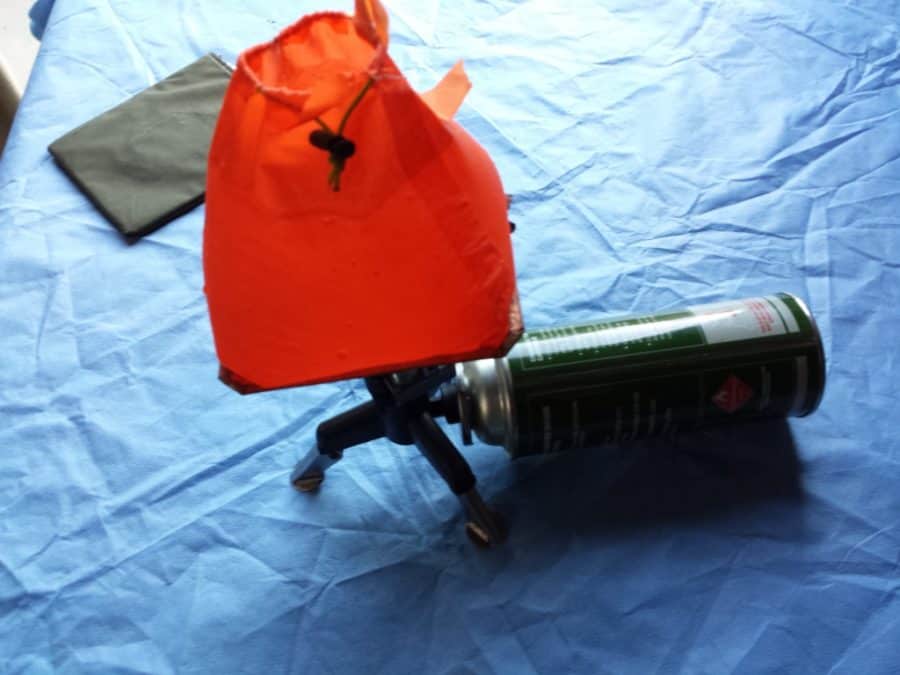
Della and I used to see and talk to Prof Sumner-Miller practically every day when we were students at Sydney Uni back in the early 70s. What an enchanting man he was. His TV show ‘Why Is It So?’ has never been bettered. You can still catch some of the episodes on Youtube.
Here is the kettle lying flat:
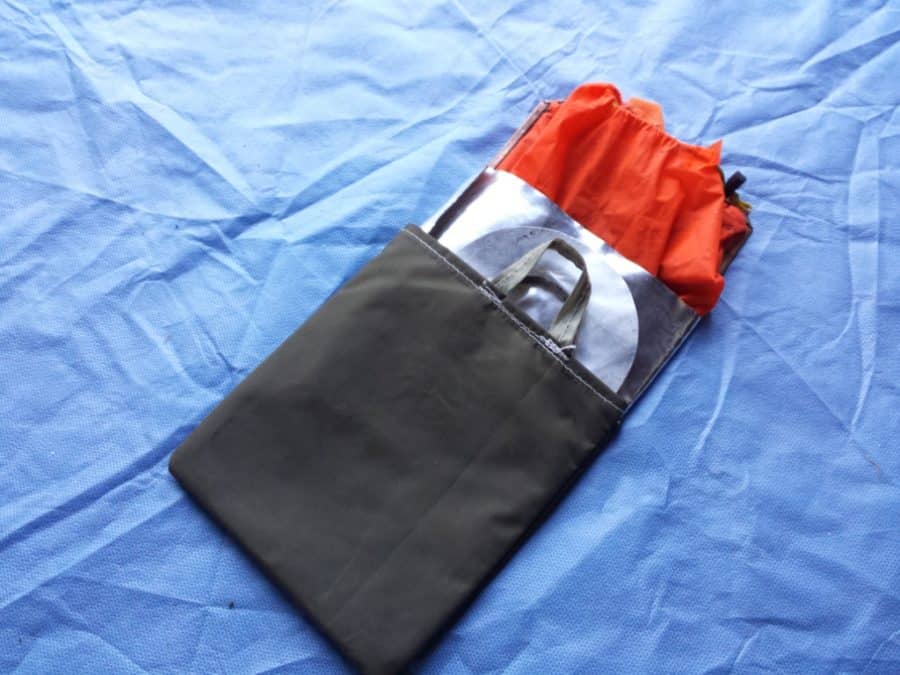
Here is a delightful little video of water boiling in the lay-flat kettle over the pudding bowl stove:
https://www.instagram.com/p/B8c89xPBqpa/
Tim also has his Instagram page (above) with lots of illustrations of his DIY ideas. You should check it out: https://www.instagram.com/telemarktim/
In his post linked above he considers the various features of the Pudding Bowl Stove and his new Miniature Dome Stove. Like his stove I described before (see links below) all these stoves are very light. He is concentrating on stoves which will weigh .5-1.0 kg such that the whole thing including chimney can easily be carried on or in your backpack for winter (snow) camping.
The stoves are intended for both cooking and providing enough warmth for convivial evenings in the tent/tipi. They output around 1,000 watts of heat which is surprising for such a small stove using only 400 grams of twigs an hour.
They certainly convince me to have a DIY attempt at a small stainless steel stove which can maybe stoked and shut down enough to only need refueling every 3-4 hours. Stay posted.
Here is his Miniature Dome Stove hard at work:
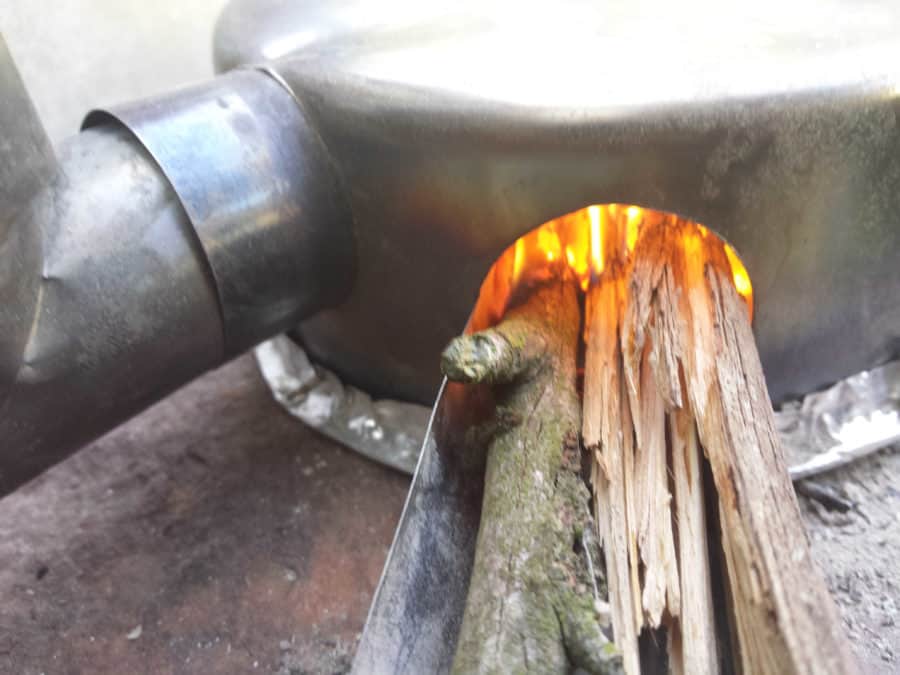
The Instagram video (below) https://www.instagram.
https://www.instagram.com/p/B8nkT_AhlQn/
These stoves are made from easily purchased stainless steel cookware or lunch tins etc. The chimneys he makes himself from Titanium foil. They are ingenious and extremely light.
He will make one for you for a fee, so you should contact him if your are interested. The chimney would be especially attractive as it is difficult to obtain the titanium foil to make it anyway.
The temperature of the stove can be higher than 350C but the temperature at the top of the short chimney is only around 100C so that a DIY Peltier electric generator would work there with one side in the near freezing air. This would be good for providing illumination and charging your various devices just as a by-product of eating and staying warm. More about that later…
See how hot they get here:
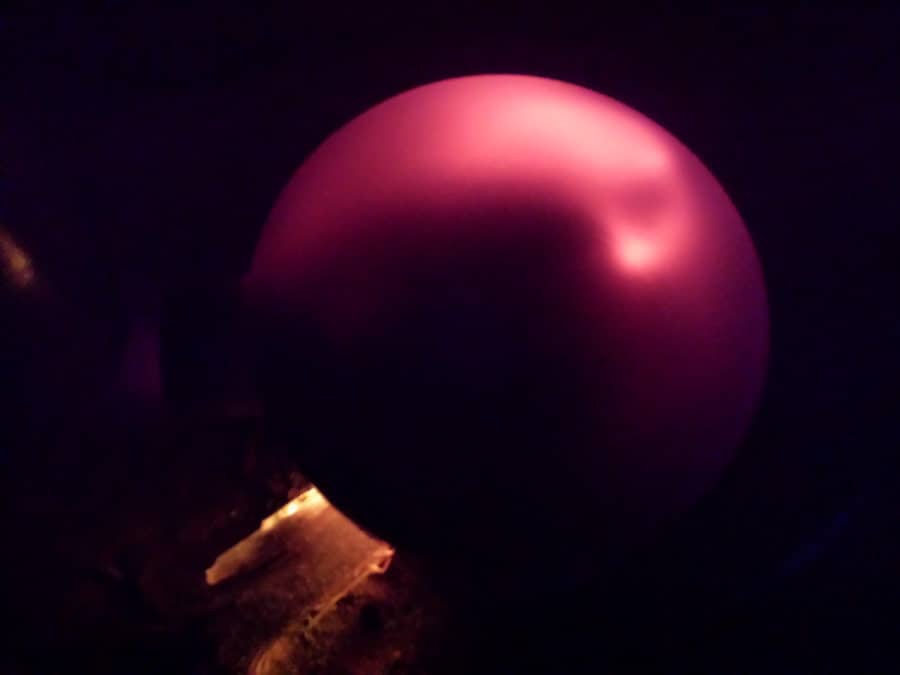
One of the most startling innovations in Tim’s designs is his discovery that you can use just some heavy aluminium foil as the floor of the stove. I would never have thought of that. I would have expected that it would get too hot, but clearly there is a big difference between the temperature at the top of a small fire as compared with its bottom. You can see that clearly in the photo above. There are many surprising and enchanting things still to learn!
Stove weight. The Miniature Dome Stove including a 6’*40mm dia roll-up flue pipe weighs just 402g. The 1L stainless steel cooking pot and aluminium foil lid add another 134g. The USB blower unit with air port, power supply and battery adds a further 130g. The total weight of the Miniature Dome Stove with its pot is ~650g.
Packing. The Miniature Dome Stove packs very efficiently inside the 1L custom cooking pot. This makes a backpack-friendly load and there is room within for other cooking gear, pot grip and fire starters etc. This pot could be nested inside a second larger pot (1.5L and 75g ) if needed to provide luxury cooking.
“I like to have a large dinner pot and a separate pot for boiling water, for plenty of hot drinks for rehydration and snow melting for water while dinner is prepared.”
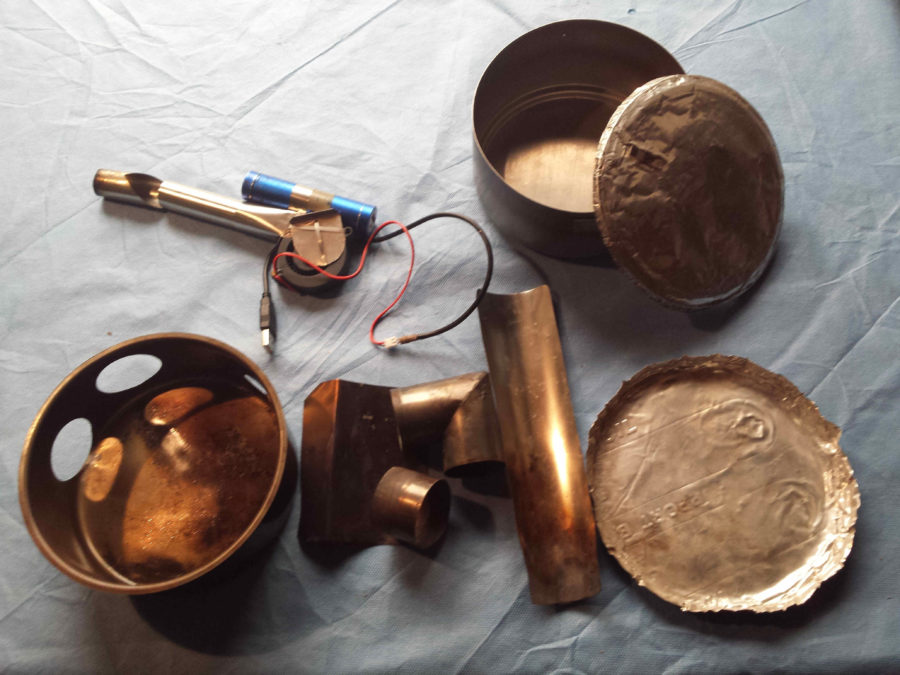
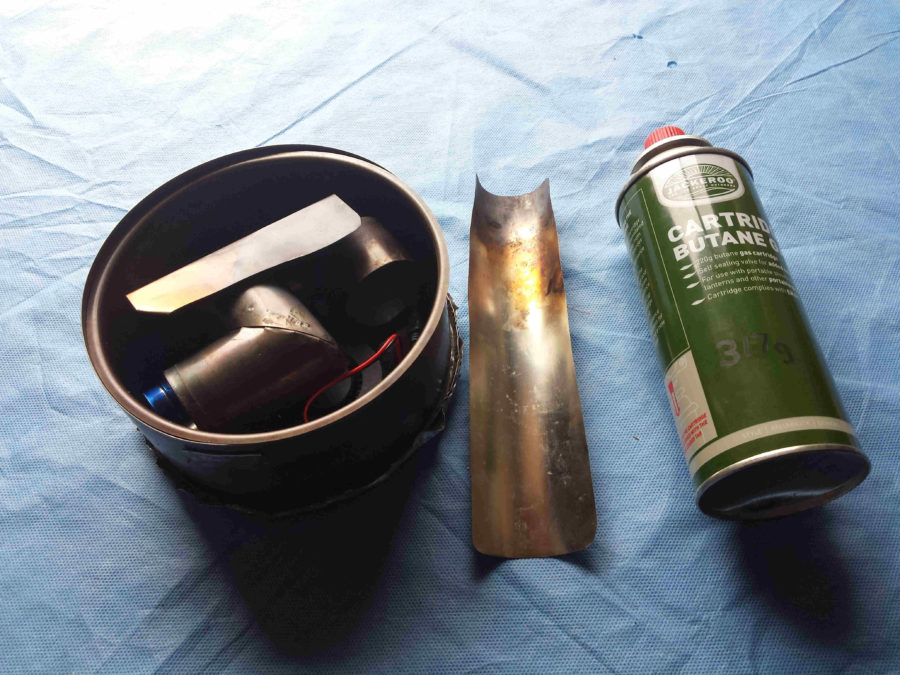
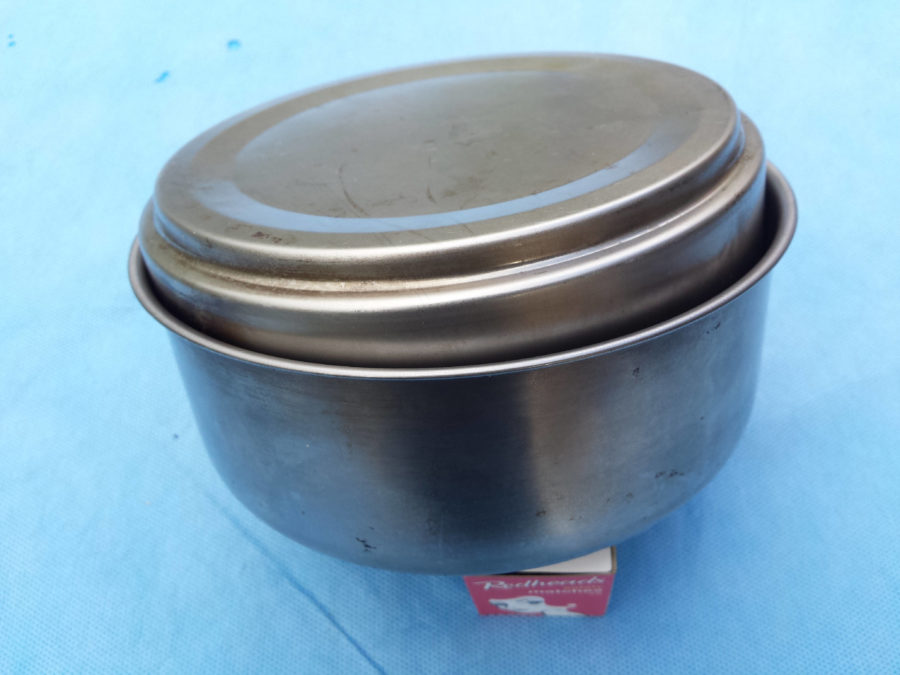
He also has instructions for making a ‘Tent Flue Gland‘ to prevent the tent from being melted by the chimney, and many other wonderful things such as Lay-Flat Handles, for example. You can spend many hours of enchantment exploring his site.
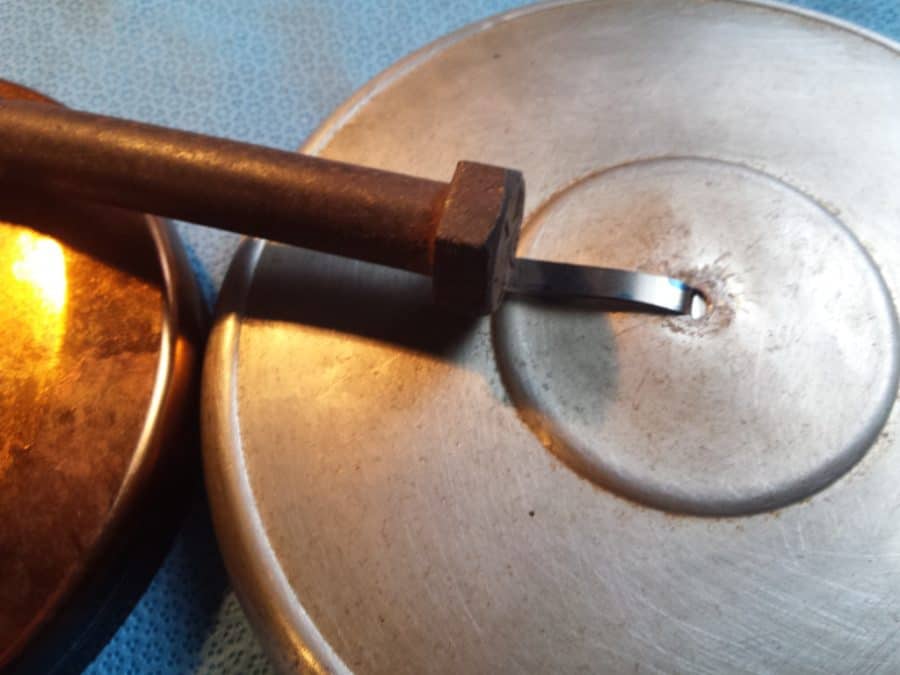
Lay flat handle laid flat in backpacking position.
You should remember that this man has journeyed (likely for longer than you have been alive) easily on skis in winter and camped out safely and comfortably for many days in the snows on our mountain tops, something which would be the death of less experienced or foolish folk – so there is much to learn from him, particularly perhaps if you think about harvesting a sambar stag above the snowline one beautiful winter’s day in the future…
Here you can see one of his winter camps in one of his DIY tents. Note the chimney:
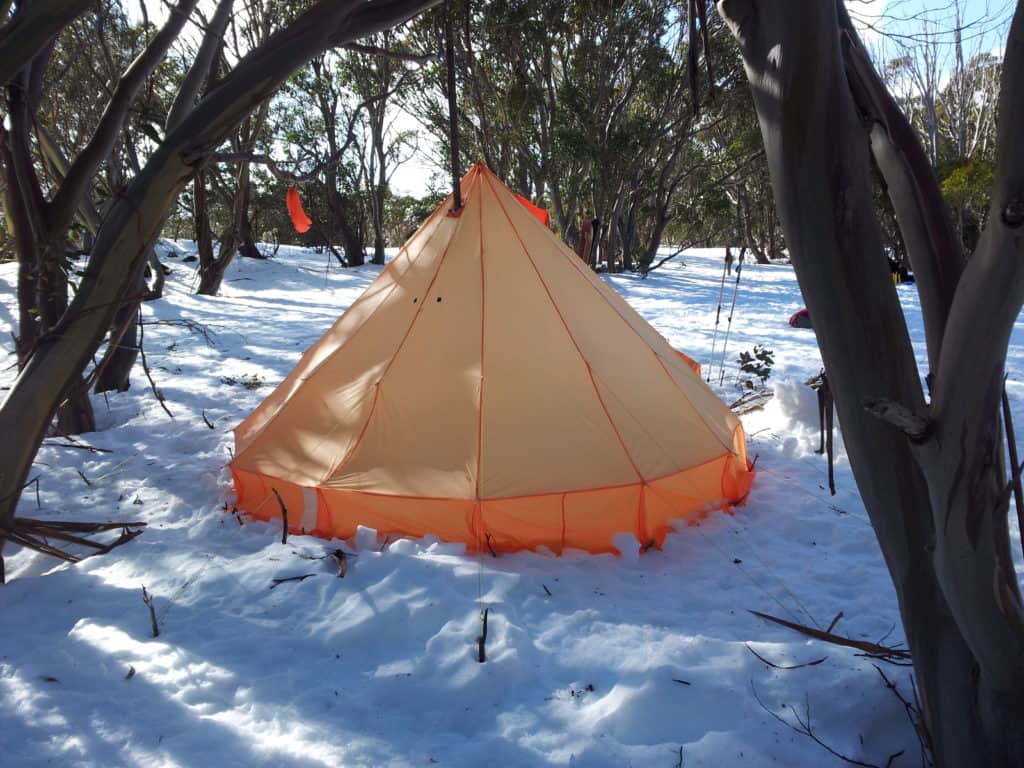
See Also:
https://www.theultralighthiker.com/2019/05/29/tim-tinker/
https://www.theultralighthiker.com/2019/05/25/seamless-tyvek-tipi/
https://www.theultralighthiker.com/2015/05/26/how-to-light-a-fire-in-the-wet/
https://www.theultralighthiker.com/2020/02/27/tinder/
https://www.theultralighthiker.com/2019/05/23/winter-tent-stoves/
https://www.theultralighthiker.com/2018/09/09/how-to-carry-a-saw/
https://www.theultralighthiker.com/2017/09/16/fire-umbrella/
https://www.theultralighthiker.com/2018/03/02/tyvek/
https://www.theultralighthiker.com/2017/05/28/tyvek-solo-fire-shelter/
https://www.theultralighthiker.com/2015/06/17/one-pole-tyvek-tipi/
https://www.theultralighthiker.com/2019/10/23/fire-on-the-snow/
https://www.theultralighthiker.com/2018/02/23/how-to-have-fun-when-hiking-in-the-rain/
https://www.theultralighthiker.com/2017/06/25/fire-from-a-can-of-coke-and-a-chocolate-bar/
https://www.theultralighthiker.com/2016/08/06/how-to-make-a-fire-with-a-gum-wrapper-and-a-battery/
https://www.theultralighthiker.com/2016/04/12/fire-engine-rolls-over-peanut-lighter/
https://www.theultralighthiker.com/2015/11/09/interesting-wet-weather-fire-starter/
https://www.theultralighthiker.com/2015/08/29/duct-tape-fire-starter/
https://www.theultralighthiker.com/2014/12/08/firelighting-tip/
https://www.theultralighthiker.com/2019/09/07/60-diy-ultralight-hiker-ideas/
https://www.theultralighthiker.com/2013/11/05/alcohol-simmer-stoves/
https://www.theultralighthiker.com/2016/01/26/cookset-woes/
https://www.theultralighthiker.com/2019/10/20/ultralight-folding-coffee-cup/
I don’t usually camp in the snow so I find it safer and easier to have an open fire outside my tent. I have been fiddling with my tarps https://www.theultralighthiker.com/2019/09/06/two-great-poly-tarp-configurations/ & especially https://www.theultralighthiker.com/2019/09/24/10-by-10-tarp-update/over the last few days in preparation for a trip to Mt Darling (we hope), but I will get back to a tent stove as I develop my tipis (https://www.theultralighthiker.com/2019/05/25/seamless-tyvek-tipi/) I have added some additional tie-outs and am now up to the point of making the 10 x 10 out of silnylon which will save me 200 grams.
I should have a very roomy tent for two (with a floor), the ability to have a fire out the front and to fasten it down completely if rain comes from all directions which will weigh all up (ie guys and pegs too) under 500 grams. It can also be a much larger shelter (if pitched diagonally) and a fully enclosed hammock tarp for one or an open hammock tarp for two.
However, I am going to try out one of Tim’s stoves (the Miniature Dome Stove) in it. (I will do a follow-up post then.) It should fit up the front between us so that either can take turns ‘feeding’ fuel to it. It is very small (only about the same size as our cook pots). We will have to watch the dogs and train them to avoid it. They are pretty good about our cooking already.
The 10 x 10 tarp should close enough at the front so that we can retain the heat (though lose the view – this will not be an issue on a dreadfully wet day). This stove will also work better where there is little wood, eg mainly twigs. The weight of 402 grams will be compensated for by my not carrying my Caldera 29, plus spare pegs 21, Brasslite stove 54, fuel measure 2, meth bottle containing meths 100?
A total saving of 206 grams making the net weight of Tim’s stove just under 200 grams so long as I am content to do all my cooking on it. Of course, as I mentioned earlier if I can make the Peltier arrangement work I can leave a Powerbank at home, so there will be no increase in weight at all! I hope our Wildo folding cups will fit inside the dome stove too. This guy has some interesting Peltiers (and circuits). It seems to me that with them one ought to be able to construct a USB battery charger warmed by one’s chimney and cooled by the winter night air: https://customthermoelectric.com/
I will have to work out how to poke the stove through the flaps, and I might need to add some velcro to the flaps to make them easy open/close. Always something interesting to do. I can’t understand how there are people in the world who are bored!
PS: Tim is making me a stove! (If you ask him nicely he will make you one too). He has already made the chimney (rolled up inside) and the flue gland which will prevent my tent from being melted. It can be simply tied to my tent pole with a piece of string:
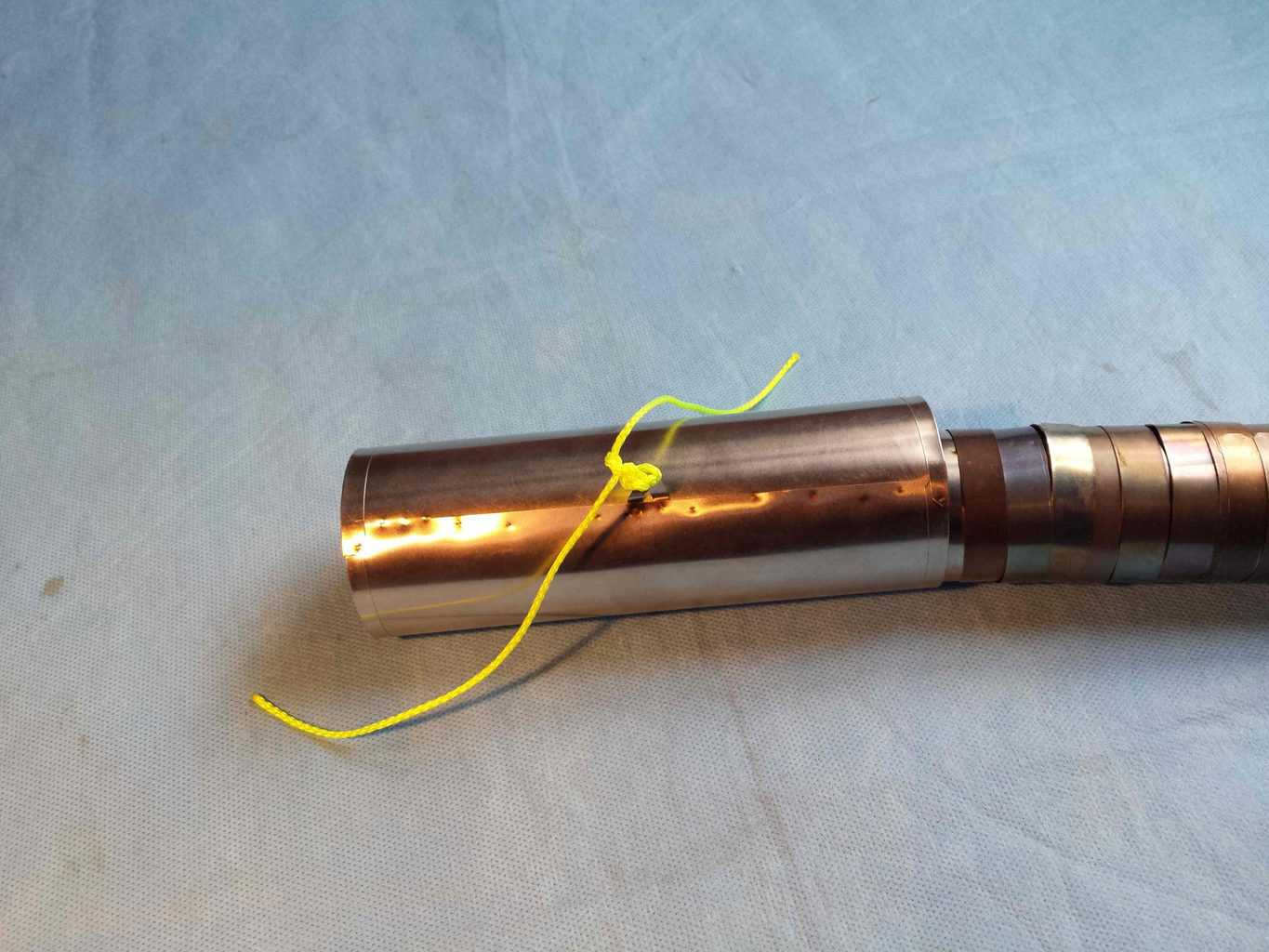
NB: His blower unit and power supply only add 130 grams (see above). This is actually a genius idea especially for getting a fire burning in wet conditions and for rapidly increasing the heat output when needed.
You must certainly avoid this:
https://www.theultralighthiker.com/2019/02/04/to-build-a-fire/
